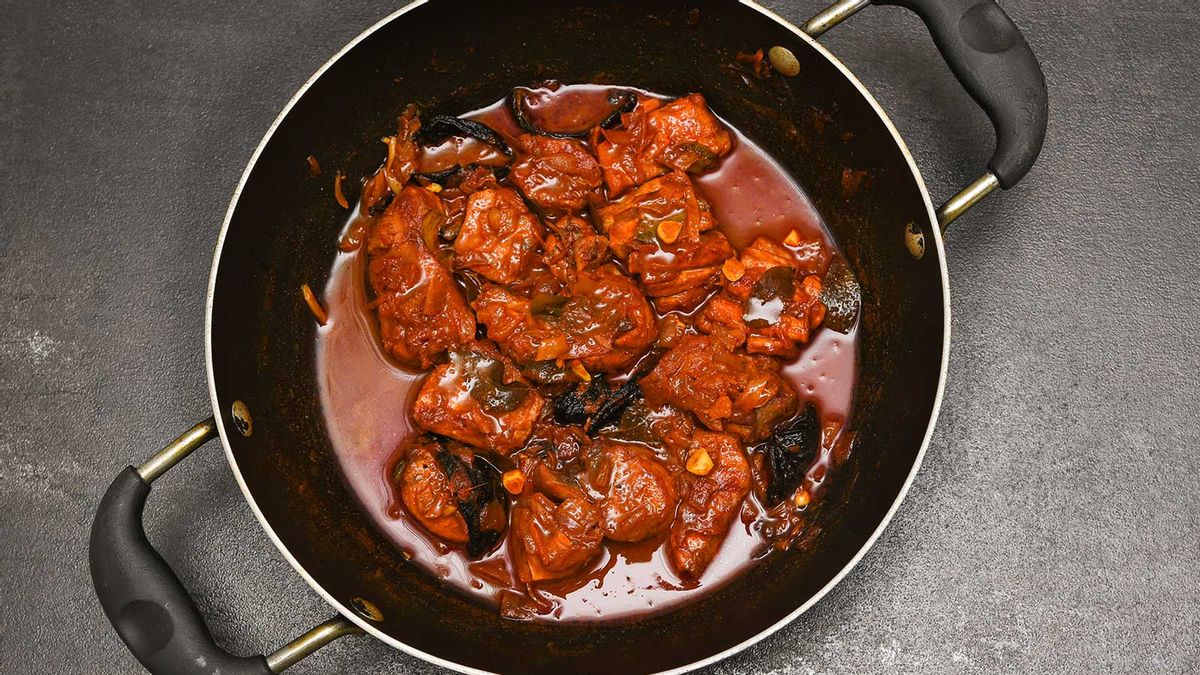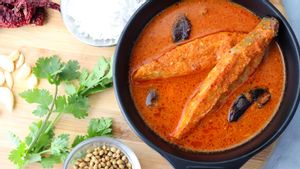Goan food is mainly divided into two styles of cooking– Catholic and Hindu. While the former reflects a Portuguese spirit and is heavy handed with the vinegar, the latter reflects the cultural heritage of the original ‘natives’ and locals, featuring the use of coconut and tamarind and kokum as souring agents.
Goa’s fishy affair with curry
Irrespective of religion, style and ingredients, there is one thing that every Goan would love as their last meal–Xit Codi (pronounced as sheeth and code)—rice and curry. And by curry, we specifically mean fish curry.
The Goans’ love for fish curry is well known. It is said that Goans always cook fish curry in larger quantities only to polish off the leftovers the next day. For those uninitiated, Goan curries or gravies always taste better the next day and the day after that.
At the helm of my family’s favourite recipes is my grandma. She eyeballs all ingredients of a curry but there is one thing that she includes in abundance is her love. Trying to gauge her use of spices and techniques is a tricky affair, however, spend enough time with her in the kitchen and you will manage to pick up on a thing or two.
Meet grandma’s ambotik
My grandmother and her fish curries are the stuff of legends. Her shark ambotik, in particular, is something to behold. Ask her about her ambotik, and she takes pride in telling you that this hot and tangy curry isn’t everyone’s cup of tea.
The basic dish is made of two components: ‘ambot’ means sour and ‘tik’ means spicy or fiery. The heat of the curry is derived from the dried chillies, which is balanced with the sourness of the tamarind and vinegar.
Besides, what’s unique about this fish curry, grandma says is the absence of freshly grated coconut or coconut milk. Unlike most Goan recipes, ambotik doesn’t use any coconut.
While this curry can be made using almost any fish, shrimps and even calamari, shark is the most popular fish of choice, she says. Grandma inherited this shark ambotik recipe from her mom and she has passed it on to my mom. Besides, she says that no two Goan homes will make ambotik fish curry in the exact same way.
Served with plain Goan boiled rice this is what a typical normal day at grandma’s home looks like!
Goan Shark Ambotik Recipe

Ingredients
- Fish of your choice (3-4 medium-size sharks)
- 10-12 Kashmiri chillies (you could reduce the amount, depending on your spice tolerance)
- 1-2 green chillies (optional)
- 1 pinch or ½ teaspoon of turmeric powder
- 1-2 pinches or 1-1½ teaspoon cumin seeds
- a few peppercorns,
- 1 small piece of ginger (say, half an inch)
- 5-6 garlic flakes
- a small-sized ball of tamarind (about the size of a date or walnut)
- 1 medium-size onion
- Oil, for frying
Method
- My grandma always stresses on cleaning and washing the fish right for the best possible meal. Remove the heads, if you like, and always discard the guts.
- Wash your fish with clean water around two to three times, then cut into desired pieces, apply salt and turmeric (save some for later) and keep aside.
- Grandma insists on chopping the onions finely, as this will help create the base of your curry and will also help combine the flavours of the other ingredients. Be warned, the way you treat your onions will play a major role in the outcome, she says. At the very least, try to roast or fry your onions till it gets to the translucent and soft stage. For a more robust flavour, you could fry them until they turn golden (be careful to not burn them). Grandma’s tip: Add a little salt while frying your onions, and come what may never leave the side of your pan.
- In a mixer, add vinegar (you could opt for water or lime juice instead) with the Kashmiri chillies, garlic, ginger, peppercorns, tamarind, the remainder of the turmeric powder, cumin seeds and the roasted onions. Blend into a nice smooth paste. This paste is the foundation of a flavourful ambotik fish curry. Therefore, this is the stage that when grandma decides whether to add more spices or chillies.
- Grandma has had years of practice, for an amateur, it’s best to taste the paste before going ahead. In case it turns out to be too spicy, you could always adjust it with some water later. Or as grandma suggests, you could add in a spoonful of sugar to balance the acidity of the vinegar or bring down the spiciness.
- In a deep bottomed pan or handi, heat some oil, add in the masala paste and fry well.
- Next, pour in some water little by little. Grandma pours some water into the mixer to scrape off the masala from the sides and not waste any of it.
- While pouring in the water, check for the consistency of the gravy. You don’t want a curry that’s too thick or too thin.
- Once the consistency is adjusted, slip in the pieces of fish.
- Toss in the slit green chillies and add salt accordingly. Give the curry a nice stir and bring it to a boil.
- On a low flame, allow the curry to cook covering the handi with a lid until fish is done.
- Allow the heavy doses of chillies, tamarind and other flavours to work their magic, as you take your very first bite of what I call ‘grandma’s love’.




